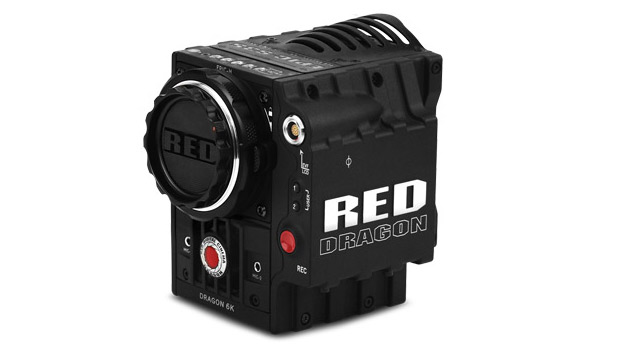Red Also Fixes Up Dragon's Flaring Artifacts with a New Low-Pass Filter
Red Fire Chief Jarred Land (that title means "president," for those of you not in the know) took to the forums at RedUser.net again last night to update users on the shipping status of new cameras and upgrades featuring the company's latest Red Dragon sensor. But Land also dropped some news about a new workflow possiblity for Dragon shooters: the Advanced Dragon Debayer, or ADD.
What's so advanced about ADD? In his post, Land called it a "hyper-debayer algorithm" that employs detailed, pixel-by-pixel analysis of a frame from the Dragon sensor in order to generate a color image of the highest quality possible. That doesn't sound like much of an innovation by itself — every camera manufacturer will tell you they put a ton of engineering muscle behind making quality debayering as simple, fast, and efficient as possible.
The difference is Red seems to have let the "fast" part of the equation drop by the wayside. Instead, Land wrote, each frame will take multiple seconds to debayer using the ADD algorithm. "It is incredibly expensive computationally," he admitted, but added, "the results are absolutely phenomenal."
Land suggested that the obvious use case for ADD would be shooters who draw still images from their high-resolution motion footage, but forum users were already doing rough calculations of how much time it would take to put their complete feature-film projects through the new process for maximum imaging quality. The answer, of course, is not minutes and not hours but rather many days for a 90-minute feature film, depending on exactly how many seconds are required for each frame. (Land said that a "fast PC tower" would churn through a frame in about 10 seconds, while a new MacBook Pro would take more like 30 seconds to crunch the numbers and spit out the picture.)
ADD will be controlled by pressing a button to export a still in an update of Red Cine-X Pro coming next week, Land said. "The guys pulling stills will probably press that button every time instead of the normal snapshot button for important shots," he wrote in a follow-up. "The motion guys probably won't be taking the time to do every single frame of their movie in batch mode unless it is really, really important."
So, will it make sense to set aside the time to process your Dragon frames with ADD? If you're relying on your Dragon for publication-quality still images that will withstand scrutiny on a printed page, poster, or billboard, then yes, it's almost certainly worth spending a little extra time ensuring the highest color resolution possible for individual images. For footage that passes by at 24fps or higher, we'll probably need some A/B testing to figure out if the benefits of the processing ever outweigh the time investment.
Land also mentioned that an issue with early Dragon cameras—an unwanted flare or glow effect that manifests under certain shooting conditions—had been addressed with the arrival of a new optical low-pass filter for the Dragon sensor, which is being built into all new cameras and upgrades, and is available as a free upgrade for existing Dragon owners.
Did you enjoy this article? Sign up to receive the StudioDaily Fix eletter containing the latest stories, including news, videos, interviews, reviews and more.

This is the same concept that DxO are using in DxO Optics for the denoiser. Wait longer, but achieve better image quality.